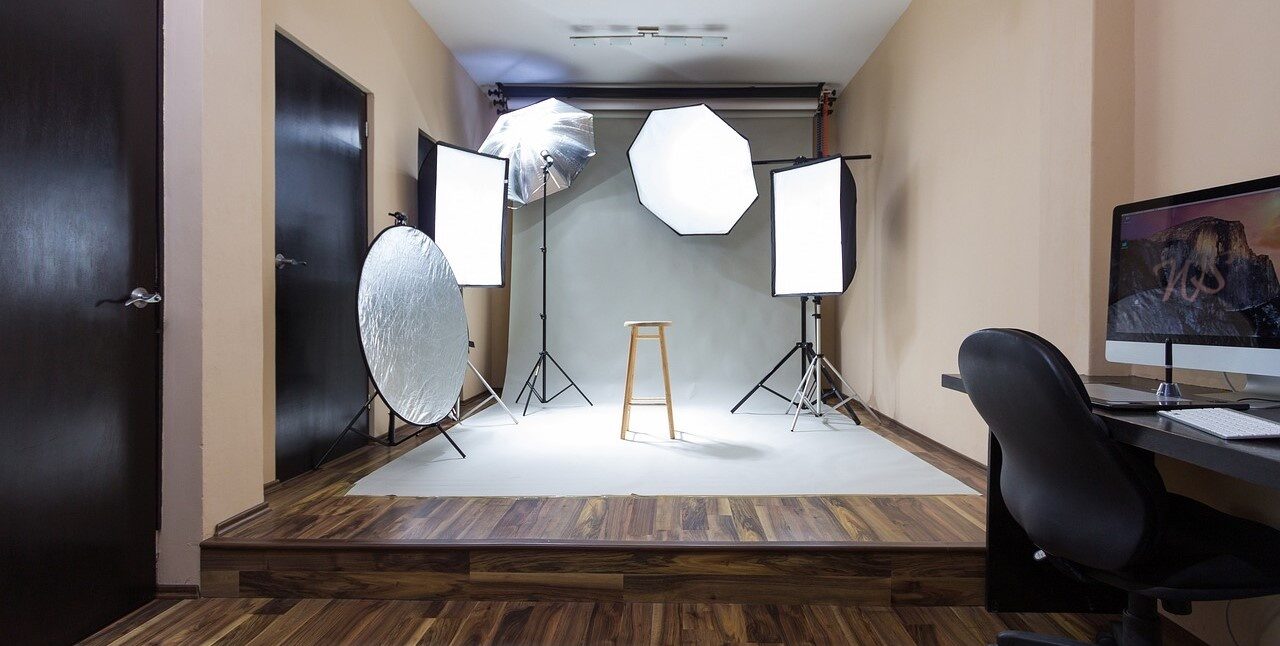Studio photography is a type of photography that is done in a controlled environment. It is typically done to take advantage of the lighting in the studio.
This setting could be a professional photography studio or a makeshift studio set up in a home or office. It gives the photographer complete control over the lighting, background, and other aspects of the image.
Post Contents
The Ideal Spaces for Studio Photography
Most people imagine a stuffy room with a white backdrop for studio photography. This can be utilized for studio, but it’s not the only choice. The best studio photography is done in unusual places. Here are some of the greatest studios for rent: Lofts are popular studio spaces. High ceilings, natural light, and an open floor design.
Warehouses offer space and high ceilings, like lofts. They have intriguing textures and architectural elements that create fantastic backgrounds. Empty stores make fantastic studios. Large windows provide natural light. Outdoor areas are fantastic for studio photography if you want to use natural light. 5. Industrial Spaces: Industrial spaces give a unique atmosphere to decide and alter scenarios.
Light Sources
In studio, two types of lighting are used: natural light and artificial light. Natural light is sunlight that enters through windows. It can be very harsh, so diffusers should be used to soften the light. Lamps, flashlights, and other light sources create artificial light. These can be controlled more easily than natural light, allowing you to achieve your desired lighting effect.
Light Modifiers
When doing studio photography, there are numerous ways to manipulate light, each with its distinct effect. Examples of common light modifiers are umbrellas, softboxes, reflectors, and diffusers. Each can be used to achieve a different look, and the type of light modifier you use will be determined by the photography style you want to achieve.
When selecting the right light modifiers for your studio, there are numerous factors to consider. Which modifiers will work best for you will be determined by the type of light you are using, the size of your subject, and the desired effect you are attempting to achieve. Light modifiers such as soft boxes, umbrellas, and reflectors are all common and can be used to achieve various looks. Experiment with various light modifier combinations to find the ideal setup for your next studio shoot.
Studio Photography Equipment
Studio photographers typically use various professional photography equipment to capture high-quality images of their subjects. Tripods, lighting equipment, reflectors, and backdrop supports are examples of such items. Aside from this specialized equipment, studio photographers frequently use software editing tools to perfect their images before printing or sharing them online.
The most common pieces of studio equipment are a camera, a tripod, a flash, and a reflector. DSLR cameras are typically used for studio photography, though some photographers may also use medium format cameras. Tripods are useful for keeping your camera steady during long exposures; flashes are required to illuminate your subject. A reflector can bounce light back onto your subject for softer, more natural lighting.
Setting Up Your Studio Photography
If you’re serious about photography, having a studio is an excellent way to showcase your work, build a clientele, and supplement your income. But where do you begin? First, you must locate a large enough space to accommodate your needs, has adequate lighting and is in a convenient location for your clients. It’s time to start setting up your studio once you’ve found the ideal location.
When setting up your studio, you’ll need to consider a few things, such as: – The type of photography you’ll be doing. – The type of lighting required. – The type of backdrop or backdrop system you intend to use. – What types of props or other items you’ll require? – How you’ll organize and store your equipment. Once you’ve gathered the necessary supplies, it’s time to assemble your studio. Set up your backdrop and backdrop system first. Then, arrange your lighting. Make sure the lighting is adequate for your needs by testing it. Set up your props and other items next. Finally, organize your equipment, so it is easy to find and adjust as needed.
What Is the Best Camera for Studio Photography?
When it comes to the best camera for photography, there is no definitive answer. However, many experts agree that a DSLR camera is the best camera for this type of photography. This is because DSLR cameras have features ideal for studio, such as manual controls, a wide range of lens options, and the ability to shoot in RAW format. The Canon EOS 5D Mark III, Nikon D810, and Sony A99 II are the best camera for studio photography. These cameras have high-resolution sensors and a range of features that make them ideal for studio photography.
When Did Commercial Studio Photography Become Common?
Commercial studio photography became common in the early 19th century when the process of daguerreotyping became widely available. Daguerreotyping was a process of using a camera to capture an image on a metal plate. This process became popular because it was relatively cheap, and the images were very realistic.
Conclusion
Photography is the process of capturing light to create images. A studio is a controlled environment in which photographers can manipulate lighting and other variables to achieve the ideal image. Commercial studio photography, such as product photography or portraiture, is common.
Studio photography is an excellent way to capture high-quality images while maintaining control over the lighting and environment. You can create a wide range of looks for any subject by utilizing various lighting techniques and props. You can master the art of photography with a little practice and produce stunning results.
